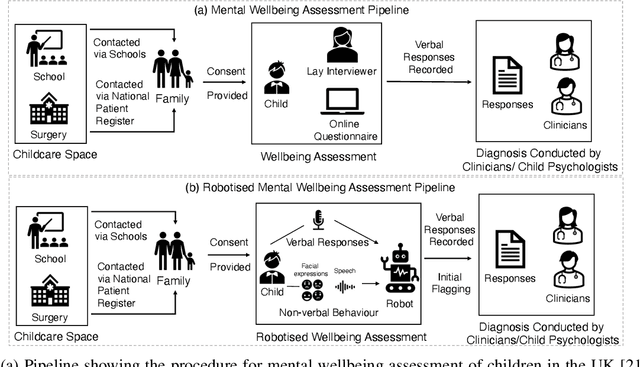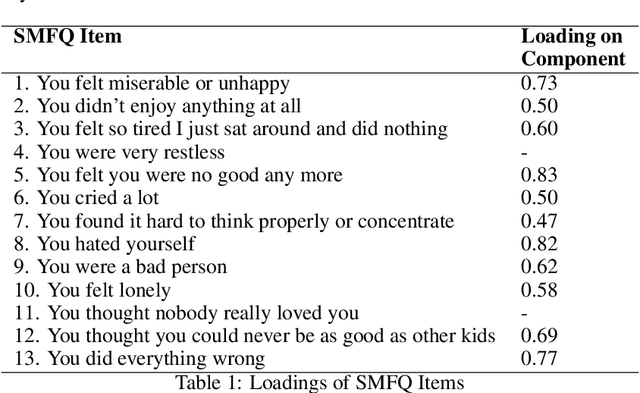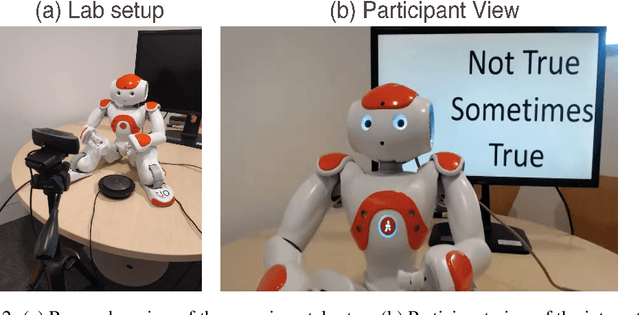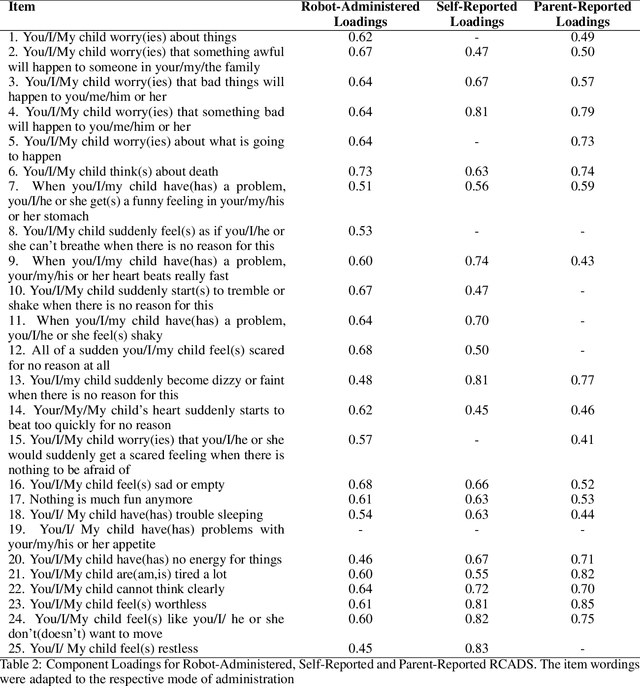Peter B. Jones
Robot-Led Vision Language Model Wellbeing Assessment of Children
Apr 03, 2025Abstract:This study presents a novel robot-led approach to assessing children's mental wellbeing using a Vision Language Model (VLM). Inspired by the Child Apperception Test (CAT), the social robot NAO presented children with pictorial stimuli to elicit their verbal narratives of the images, which were then evaluated by a VLM in accordance with CAT assessment guidelines. The VLM's assessments were systematically compared to those provided by a trained psychologist. The results reveal that while the VLM demonstrates moderate reliability in identifying cases with no wellbeing concerns, its ability to accurately classify assessments with clinical concern remains limited. Moreover, although the model's performance was generally consistent when prompted with varying demographic factors such as age and gender, a significantly higher false positive rate was observed for girls, indicating potential sensitivity to gender attribute. These findings highlight both the promise and the challenges of integrating VLMs into robot-led assessments of children's wellbeing.
A Longitudinal Study of Child Wellbeing Assessment via Online Interactions with a Social Robots
Apr 16, 2024



Abstract:Socially Assistive Robots are studied in different Child-Robot Interaction settings. However, logistical constraints limit accessibility, particularly affecting timely support for mental wellbeing. In this work, we have investigated whether online interactions with a robot can be used for the assessment of mental wellbeing in children. The children (N=40, 20 girls and 20 boys; 8-13 years) interacted with the Nao robot (30-45 mins) over three sessions, at least a week apart. Audio-visual recordings were collected throughout the sessions that concluded with the children answering user perception questionnaires pertaining to their anxiety towards the robot, and the robot's abilities. We divided the participants into three wellbeing clusters (low, med and high tertiles) using their responses to the Short Moods and Feelings Questionnaire (SMFQ) and further analysed how their wellbeing and their perceptions of the robot changed over the wellbeing tertiles, across sessions and across participants' gender. Our primary findings suggest that (I) online mediated-interactions with robots can be effective in assessing children's mental wellbeing over time, and (II) children's overall perception of the robot either improved or remained consistent across time. Supplementary exploratory analyses have also revealed that gender affected the children's wellbeing assessments as well as their perceptions of the robot.
 Add to Chrome
Add to Chrome Add to Firefox
Add to Firefox Add to Edge
Add to Edge